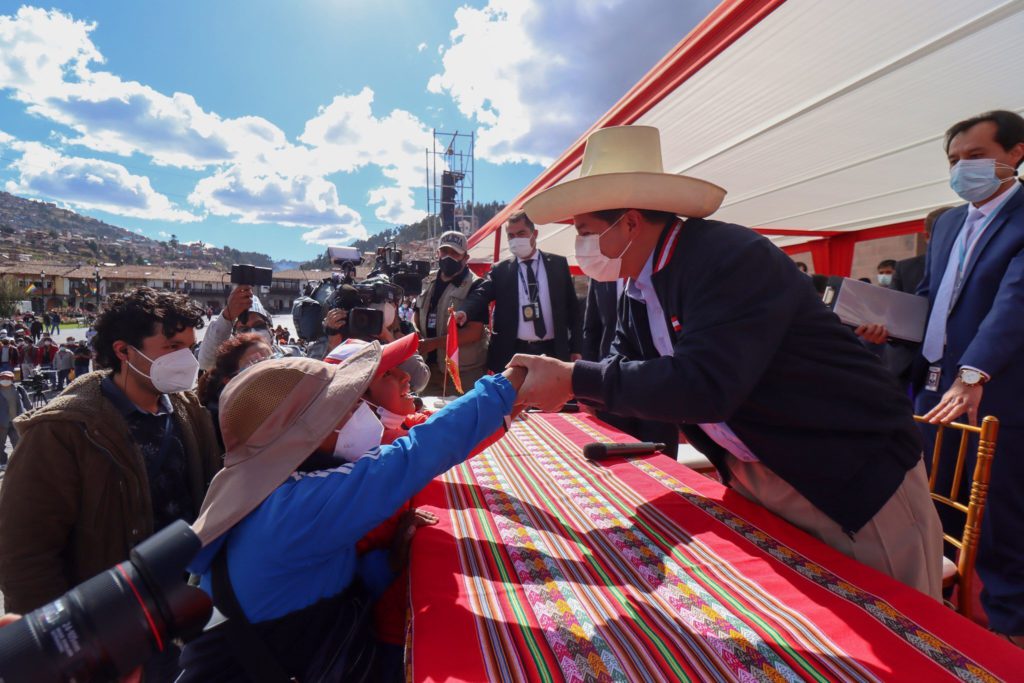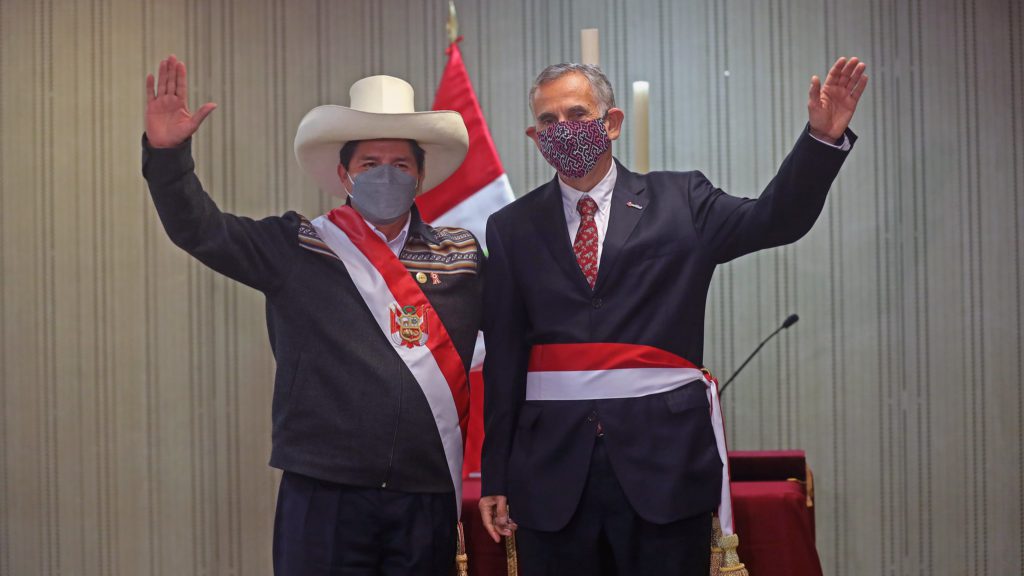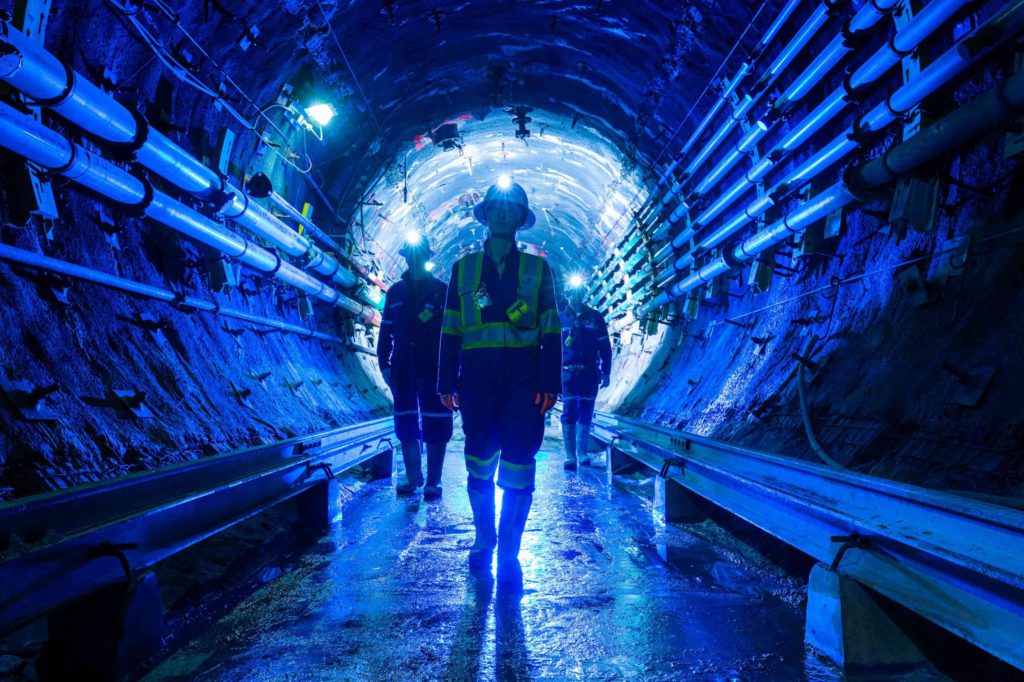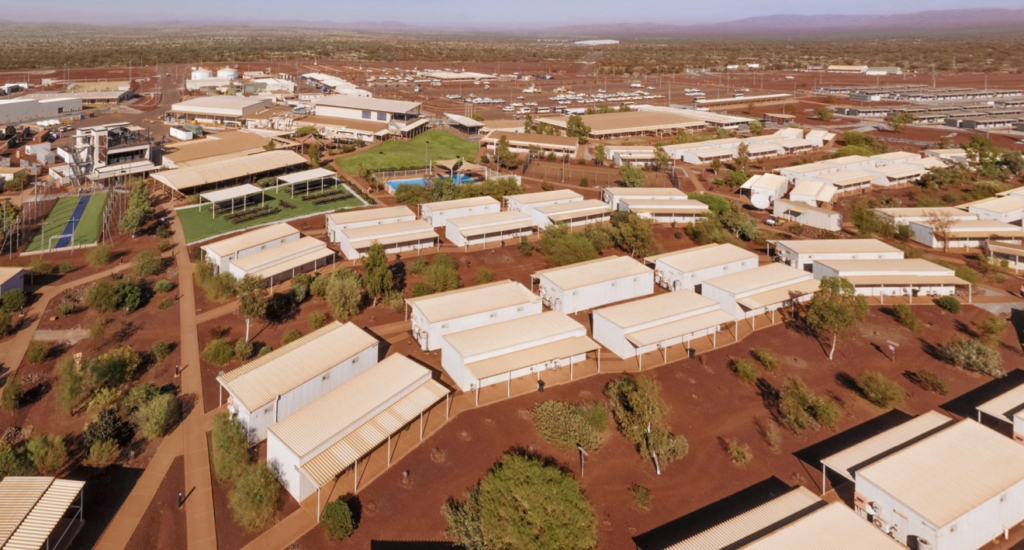Bloomberg News | September 23, 2021 |

Pedro Castillo. (Image from Castillo’s, Twitter profile)
Some of the world’s biggest miners say they like what they’re hearing from Peru’s new leftist government of late, further easing fears that drastic policy changes could stall future output in the No. 2 copper nation.

Freeport-McMoRan Inc. boss Richard Adkerson said Thursday at an industry event that he was left “encouraged” from a recent meeting with President Pedro Castillo, a former rural union activist from a Marxist party. At the same conference two days earlier, BHP Group’s president for minerals in the Americas, Ragnar Udd, complimented the government’s “strategic” approach.
The praise marks a sharp turnaround from the investor anxiety that surrounded elections in April, when Castillo vowed to nationalize assets, block projects and take a bigger share of the mineral windfall to fight poverty. The polarizing process spurred concern that a far more onerous operating environment would derail investments needed to help fill a looming copper supply gap as the world tries to wean itself off fossil fuels.
Adkerson, Udd and other executives speaking this week at the virtual Peruvian event known as Perumin highlighted the huge potential for the South American nation to capitalize on rising global demand to boost communities and the broader economy. But given mining’s historically tense relations with communities in Peru, speakers were also clear to underscore the industry’s collaborative and sustainable approach going forward.
And while the more moderate factions in the administration may have won favor of late, Castillo still plans to raise taxes to fight poverty — which explains some cautionary remarks.
“Other nations are also well resourced, and the nature of this industry is that not every opportunity will be realized — investment capital is a finite resource that competes on a global scale,” BHP’s Udd said.
American mining veteran Adkerson, who oversees the top publicly traded copper company, also spoke of the “complicated issues” that still have to be addressed. “But as miners, we want to listen to the problems and find ways of working with the government, communities and the country in trying to address them,” the Freeport CEO said.
(By James Attwood, with assistance from María Cervantes)
IMF to advise Peru on reform to increase mining taxes, says finance minister
Reuters | September 23, 2021 | 7:18 pm Intelligence Latin America Copper

Peru’s finance minister, Pedro Francke with the country’s new president, Pedro Castillo. (Credit: Presidencia Peru)
Peru’s finance minister said on Thursday that the International Monetary Fund would advise Peru on a tax reform on the mining sector that will capture more revenue in times of high metal prices without affecting competitiveness.

“There is a need for more fiscal resources,” finance minister Pedro Francke, a left-wing economist, said at the Perumin conference, attended by many mining executives in the world’s No. 2 copper producer.
“It’s not about changing the system we have … but to raise rates in the higher (income) bands,” Francke added. In addition to the IMF, Francke said the World Bank had also offered to help with the tax reform.
Mining is a key source of tax revenue in Peru and the new leftist administration of President Pedro Castillo has repeatedly said it wants to increase mining taxes to pay for new social programs.
Peru has one of the lowest tax-to-GDP ratios in Latin America, according to the Organisation for Economic Co-operation and Development, and Francke said he is eager to improve those numbers.
Francke’s remarks are in line with what he told Reuters in an interview in early August when he said higher taxes would be designed to not affect the mining sector’s competitiveness.
Francke said he would unveil more details about the proposal next week when he is scheduled to present the tax reform proposal to Congress.
Francke’s remarks come after accompanying Castillo to the United Nations General Assembly, a trip where the two also held meetings with investors and mining corporations.
He said he had met with the CEO of gold miner Newmont, as well as executives from Freeport-McMoRan, Anglo American and Rio Tinto.
Freeport’s CEO Richard Adkerson said at the Perumin conference earlier on Thursday that he had been “impressed” by Castillo after meeting with him.
“We agreed that we need to try to work together and to provide an opportunity for mining companies in Peru to be comfortable in investing,” Adkerson said.
He noted that “no decisions were made” at the meeting.
(By Marcelo Rochabrun; Editing by Gerry Doyle)














